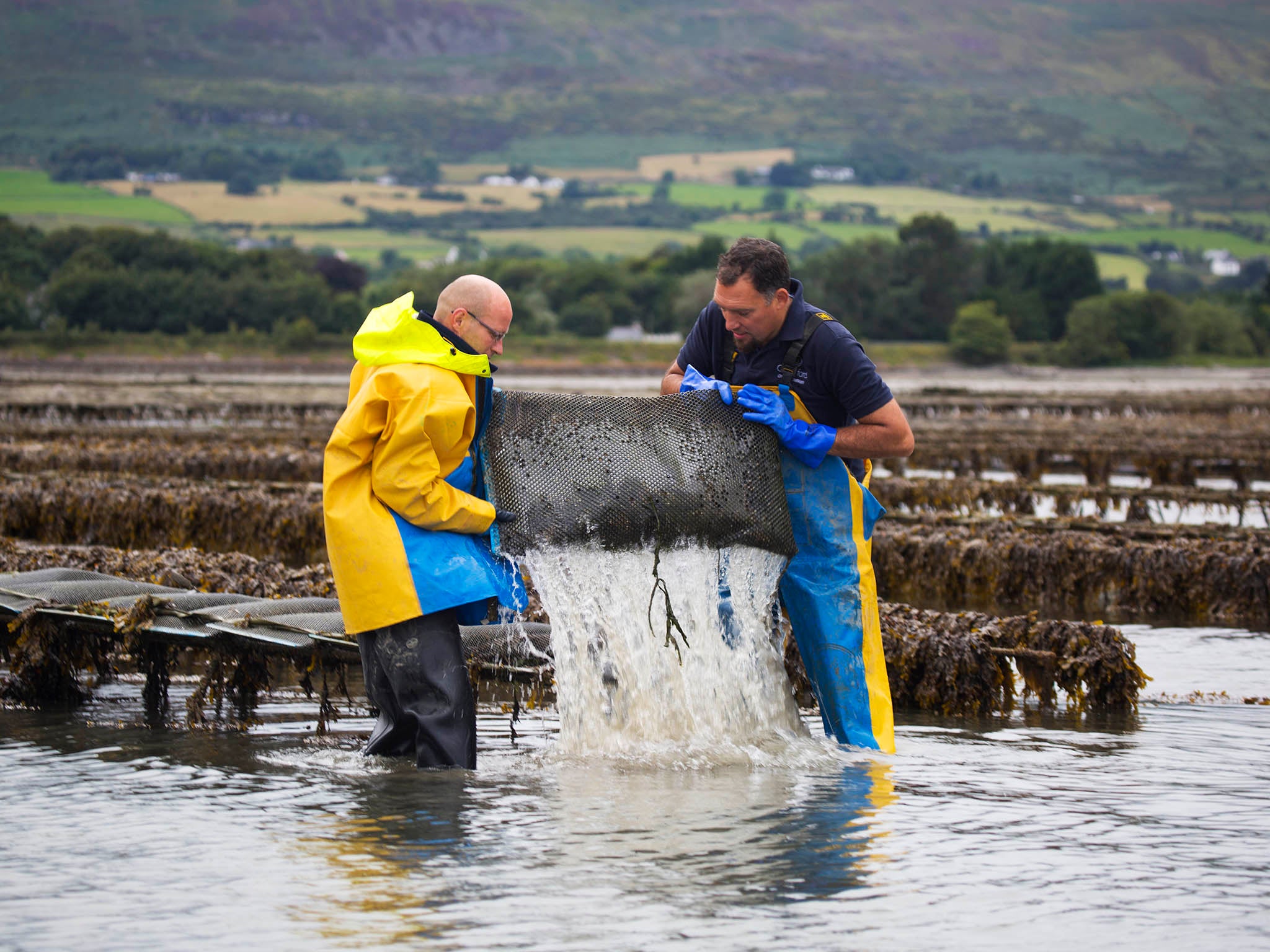Why farming oysters is sustainable and good for the environment
Demand for oysters is growing – and not just because of their most famous health benefit. Julia Platt Leonard looks into the sustainable, holistic world of bivalve farming

I gamely pick up an oyster, cup it in my left hand and hold the oyster knife in my right, ready for attack. Surely it can’t be that difficult to shuck an oyster? But a few jabs later and it’s clear this bivalve isn’t budging.
When it’s gently pointed out that I’m trying to open the wrong end, I concede that I may have a steeper learning curve than anticipated.
Luckily, I’m in Oysters 101, also known as the Oyster Masterclass at Bentley’s Oyster Bar & Grill. As my wine glass is topped up, I let oyster shucker extraordinaire, Helio Garzon show me the basics.
He and his team shuck up to 1,000 oysters a day at Bentley’s. He inserts the knife into the oyster, quick flick of the wrist and he’s in.
I get some extra one-on-one tutoring from Katy Davidson – the Oyster Lady – who joined Helio for the class. Davidson tasted her first oyster when she was 12 on a family trip to France. She watched enthralled as her father used a pen knife to open the oysters (“It did not go well for him,” she laughs) but it was the taste that got her. “Lo and behold when they were prised open there was something really delicate inside. And I loved them and that was me hooked,” she says.
Today, Davidson is part of an oyster renaissance, helped by the fact that farmed oysters are considered a sustainable food, unlike a lot of fish and seafood.
“Not only does farming not have a negative impact, it also has a positive impact which is very unusual in any form of food production,” she says. Oysters purify the water they’re growing in and both native and farmed oysters sequester nitrogen and CO2 from the atmosphere. “They’re kind of little carbon capture tools,” she says.
Oysters are now cultivated widely at farms like Carlingford Oysters, located 60 miles from Belfast and Dublin. The company was started in 1974 by Peter Louet-Feisser and is now run by his children Kian and Charm. “If I go back 25 years ago, it was very difficult to sell oysters,” Kian Louet-Feisser says. “It was a very small market and there weren’t many people interested in it.” Thanks to cookery programmes, chefs and some positive press, that’s changed.
Carlingford grow about 2-2.5 million oysters a year and sell mainly in the UK. It takes three years or more for an oyster to reach maturity (“You get a bit attached to your oysters,” Louet-Feisser says).
They grow oysters in bags and the sea water flushes through them, allowing the oysters to feed on plankton. “As a method of farming, it’s quite holistic because to grow really good oysters you have to watch the oyster and you can’t force good quality on them, you have to make sure the oyster is happy and then you get a really good oyster,” he adds.
Since each oyster can filter over 55 litres of water a day, oysters taste of the land and water that surrounds them – giving them a unique terroir, much like a fine wine or olive oil.
“One of the nicest things about being an oyster farmer is that people that eat your oysters are passionate. They’re as passionate about eating your oysters as we’re passionate about growing them,” Louet-Feisser says.
While most of us think of eating oysters raw on the half shell, Davidson would like to see them available pre-shucked, like you find mussels.
“I know there is a kind of purist angle whereby you only want them freshly shucked on the half shell but that’s an unnecessary barrier. Of course you can do that if you so desire but the two aren’t mutually exclusive. You can have that and you can have a bag of pre-shucked and make a lovely oyster stew,” she says.
Eating more oysters would be good for our health too. “They are absolutely jam packed with zinc – that’s what they’re most famous for,” Davidson adds.
“There’s more zinc in them than you’d get from the same amount of protein in liver or steak,” she says. They contain Vitamin B12 plus importantly, fatty acids including DHA and EPA which have been linked with mood. “There is actually talk of them being used for combatting stress, depression and low mood,” Davidson says.
Back at Bentley’s, I wisely set my oyster knife down and let Garzon and Davidson do the hard work, plying me with perfectly shucked farmed Pacific oysters and coveted native ones.
Davidson says there is work being done to create oyster extracts as mood lifters. She laughs: “Personally, I’d just eat the oysters.” As I squeeze a bit of lemon juice and bite into another oyster, I couldn’t agree more.
Subscribe to Independent Premium to bookmark this article
Want to bookmark your favourite articles and stories to read or reference later? Start your Independent Premium subscription today.

Join our commenting forum
Join thought-provoking conversations, follow other Independent readers and see their replies